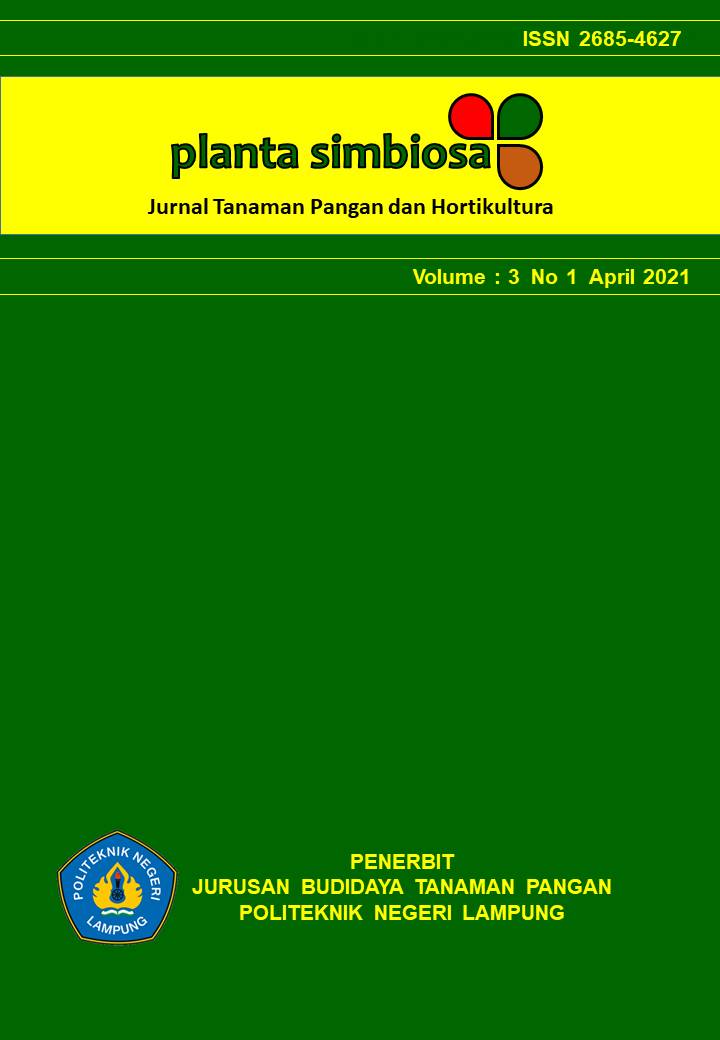Effect of Maturity Stages and Chitosan Consentration to Quality of Tomatoes
Effect of Maturity Stages and Chitosan Consentrationto Quality of Tomatoes (Solanum lycopersicum L.)
DOI:
https://doi.org/10.25181/jplantasimbiosa.v3i1.1977Abstract
Tomato is one of Indonesia's export commodities that its production continues to increase from year to year. The high demand for tomatoes must be in the line with the guarantee of quality product until it reach to the consumers. The treatments given to maintain the quality of tomatoes were the maturity stages (green and turning) and the concentration of chitosan (2%, 3%, and 4%). The aim of this study is to obtain the information about the effect of maturity stages, chitosan consentration, and its interaction to the quality of tomatoes at 21 days of storage. The results showed that the ‘turning’ initial maturity stage showed a significantly higher weight loss and consumer preference leve and lower level of hardness than tomatoes with ‘green’ initial maturity. The 3% chitosan coating treatment had a significant effect on increasing the soluable solid content of tomatoes. The combination treatment did not give any significant interactions to the quality of tomatoes.Downloads
Download data is not yet available.
Downloads
Published
2021-05-04
How to Cite
Sari, R. M., Maulana Sy., E. ., Sesanti, R. N., & Ali, F. . (2021). Effect of Maturity Stages and Chitosan Consentration to Quality of Tomatoes: Effect of Maturity Stages and Chitosan Consentrationto Quality of Tomatoes (Solanum lycopersicum L.). J-Plantasimbiosa, 3(1), 34-44. https://doi.org/10.25181/jplantasimbiosa.v3i1.1977
Issue
Section
Artikel








